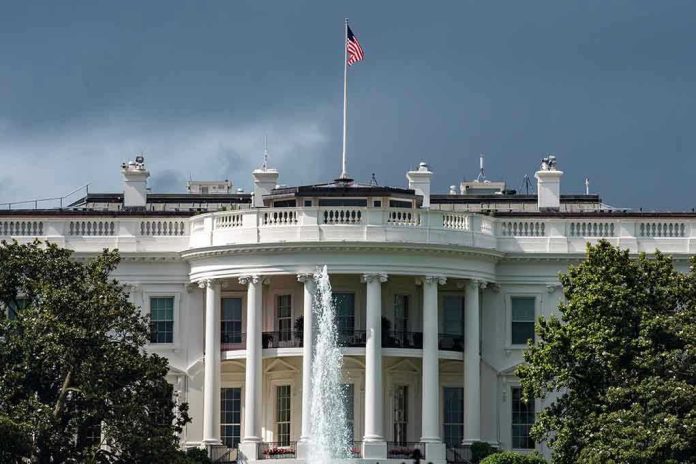
Trump’s blunt “You can just say yes” response to being called a fascist by NYC Mayor-elect Zohran Mamdani marked the most candid moment of a meeting that turned political rivalry into an unexpected lesson in pragmatic bipartisanship.
Story Snapshot
- Trump’s direct “fascist” remark to Mamdani upended expectations, drawing national attention to their Oval Office encounter.
- The meeting pivoted from hostile campaign rhetoric to a surprisingly cordial tone focused on collaboration.
- Both leaders emphasized shared priorities on crime, housing, and cost of living, signaling a pragmatic shift despite deep ideological divides.
- This high-profile exchange may set a precedent for future bipartisan efforts between federal and municipal leaders.
Oval Office Clash: From Campaign Heat to Governance Cool
On November 22, 2025, President Donald Trump and New York City Mayor-elect Zohran Mamdani met in the Oval Office for their first official discussion since Mamdani’s election. The meeting was charged with anticipation, given Trump’s history of labeling Mamdani as a “communist” and “jihadist” during the heated mayoral campaign. Yet, what unfolded was less a continuation of campaign theatrics and more a demonstration of political theater’s ability to pivot—sometimes dramatically—toward pragmatism. The focal point came when Trump, responding to discussion of ideological labels, told Mamdani, “You can just say yes” to being called a fascist, drawing a rare moment of candor from two leaders on opposite ends of the political spectrum.
Trump’s quip and Mamdani’s composed response set the tone for the rest of the meeting. Instead of spiraling into mutual accusations, both men acknowledged their differences and steered the conversation toward the pressing concerns facing New Yorkers. The national spotlight intensified as both leaders, infamous for their rhetorical sparring, demonstrated an unexpected willingness to collaborate on issues like crime, cost of living, and housing. The encounter, broadcast and scrutinized, underscored not just their political rivalry, but also a shared sense of responsibility to the city’s residents.
Historical Rivalry: From Ideological Warfare to Policy Negotiation
The Trump-Mamdani dynamic exemplifies the current age of political polarization. Trump, the president renowned for his confrontational style, spent much of the campaign period attacking Mamdani’s progressive positions. Mamdani, the first South Asian and Muslim elected as NYC Mayor, became a symbol of the city’s leftward shift. Their relationship, forged in the fire of mutual suspicion, was defined by campaign trail insults and a relentless media cycle. Yet, the Oval Office meeting revealed a pragmatic undercurrent: both men, now charged with governing, recognized the necessity of collaboration despite personal and ideological animus.
Power dynamics played a central role in the encounter. Trump, wielding federal executive authority, sought to maintain relevance and influence over a politically pivotal city. Mamdani, intent on establishing credibility as a reformer, faced the challenge of navigating federal-municipal relations under a president who had previously questioned his legitimacy. Advisors and stakeholders from both camps watched closely, aware that the outcome would shape not only party narratives but also the future trajectory of city governance.
Public Response and Media Analysis: Civility or Calculated Optics?
The public reaction to the meeting was swift and divided. Some conservative commentators praised Trump’s willingness to “reach across the aisle,” framing the exchange as evidence of pragmatic leadership. Progressive voices, meanwhile, lauded Mamdani’s composure and his ability to redirect the conversation to substantive policy matters. Analysts cautioned that while the meeting’s tone was cordial, it remained to be seen whether rhetoric would translate into real change for New Yorkers. The absence of immediate policy agreements left open questions about the depth and durability of this apparent bipartisanship.
Media coverage highlighted the novelty of such direct engagement between federal and municipal leaders with starkly opposed ideologies. Academic experts in urban politics underscored the significance of the event, pointing out that previous high-profile meetings between rivals had rarely resulted in lasting cooperation. The event’s impact on public perceptions of civility and bipartisanship may endure, regardless of future policy outcomes.
The Aftermath: Implications for Urban Policy and National Discourse
The short-term consequence of the Trump-Mamdani meeting was a brief easing of partisan tensions in NYC governance. Residents and advocacy groups closely followed developments, hoping that the leaders’ shared focus on crime, housing, and cost of living would yield actionable results. The long-term effects remain uncertain, but the precedent set by the encounter could influence future relations between federal and municipal governments, especially in politically divided cities.
Policy watchers in urban management, law enforcement, and housing sectors are alert to possible joint initiatives stemming from this dialogue. The episode may mark a subtle shift in American political culture, demonstrating that even the most entrenched ideological divides can be bridged—at least temporarily—when public welfare is at stake. Whether this moment represents genuine progress or calculated optics, its repercussions will be felt in New York City and beyond.















